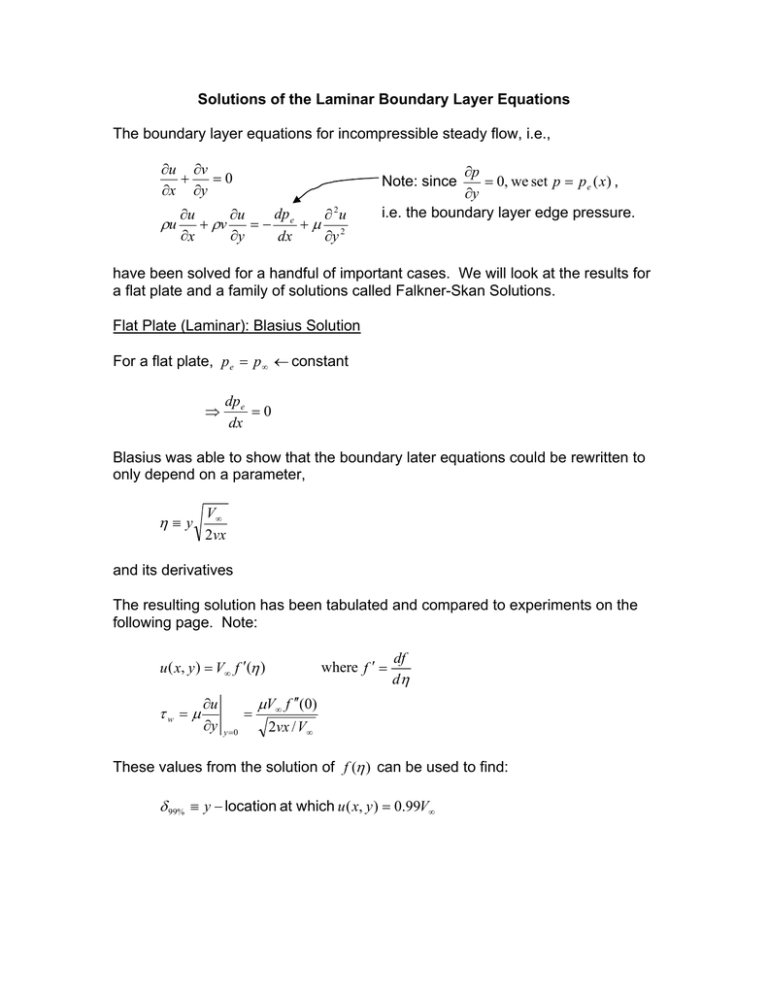µ ρ
advertisement

Solutions of the Laminar Boundary Layer Equations The boundary layer equations for incompressible steady flow, i.e., ∂u ∂v + =0 ∂x ∂y ρu ∂p = 0, we set p = p e ( x) , ∂y i.e. the boundary layer edge pressure. Note: since dp ∂u ∂u ∂ 2u + ρv =− e +µ 2 ∂x ∂y dx ∂y have been solved for a handful of important cases. We will look at the results for a flat plate and a family of solutions called Falkner-Skan Solutions. Flat Plate (Laminar): Blasius Solution For a flat plate, p e = p ∞ ← constant ⇒ dp e =0 dx Blasius was able to show that the boundary later equations could be rewritten to only depend on a parameter, η≡y V∞ 2vx and its derivatives The resulting solution has been tabulated and compared to experiments on the following page. Note: u ( x, y ) = V∞ f ′(η ) τw = µ ∂u ∂y = y =0 where f ′ = df dη µV∞ f ′′(0) 2vx / V∞ These values from the solution of f (η ) can be used to find: δ 99% ≡ y − location at which u ( x, y ) = 0.99V∞ Solutions of the Laminar Boundary Layer Equations From the table, f ′(η ) = 0.99 at η ≈ 3.5 : V∞ 2vx η=y 3.5 = δ 99% V∞ 2vx ⇒ δ 99% = 3.5 2vx V∞ ← boundary layer grows as x Typically, this result is written “non dimensionally” as: δ 99% = x 5.0 Re x where Re x ≡ V∞ x v Reynold' s number based on x We can also find: δ* x θ x = = 1.7208 Re x 0.664 Cf = Re x τw 1 ρ ∞V∞2 2 = 0.664 Re x Comment: ∗ At leading edge of a flat plate x → 0 and this gives C f → ∞ ! ∗ In reality, the leading edge of an infinitely thin plate would have very large, but not infinite C f . ∗ The problem is that near the leading edge of a thin plate, the boundary layer equations are not correct and the Navier-Stokes equations are needed. Question: Why did the boundary layer approximation fail at x → 0? 16.100 2002 2








